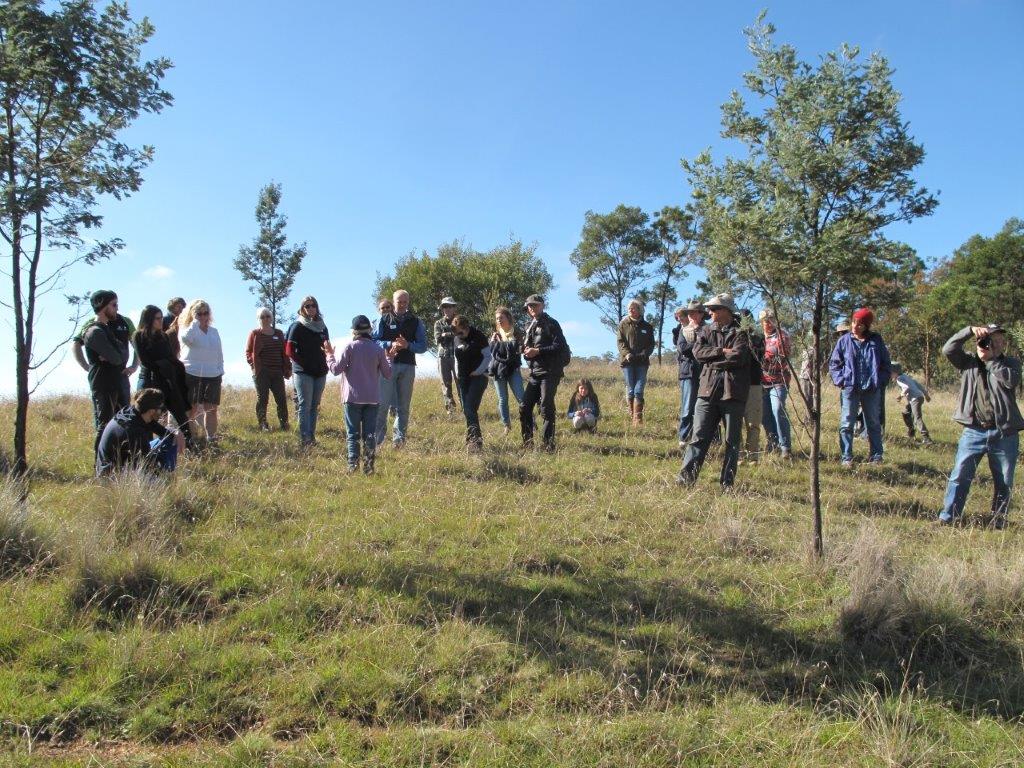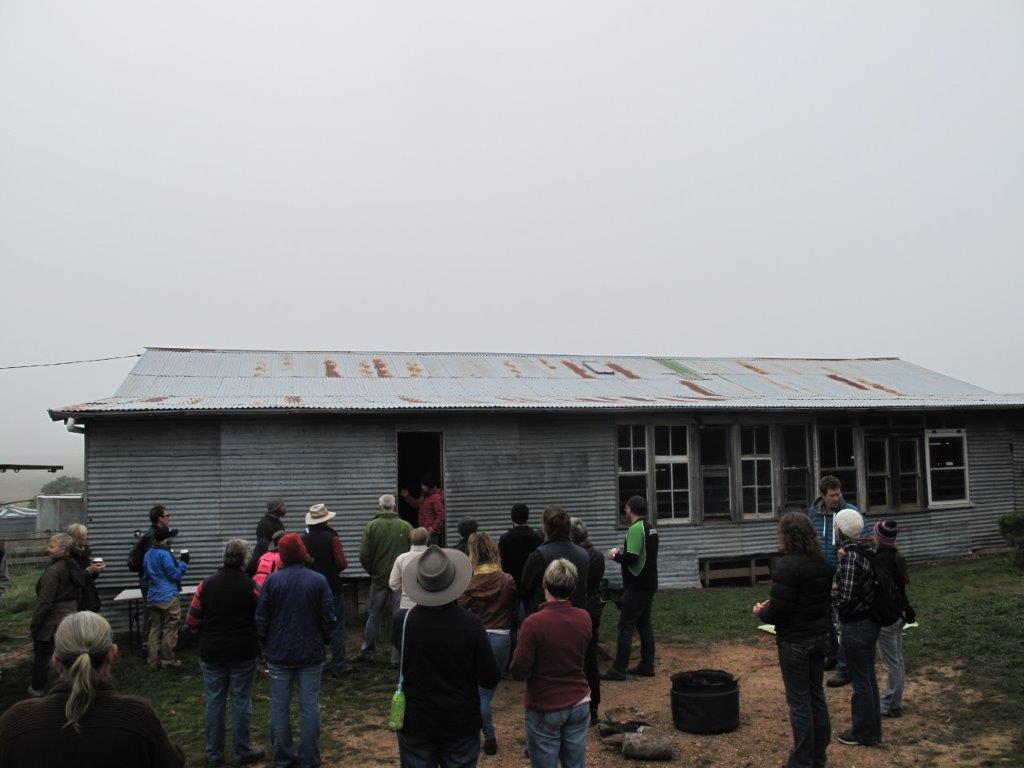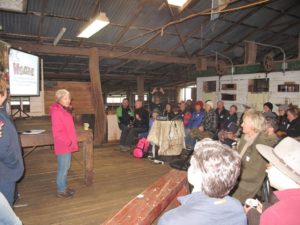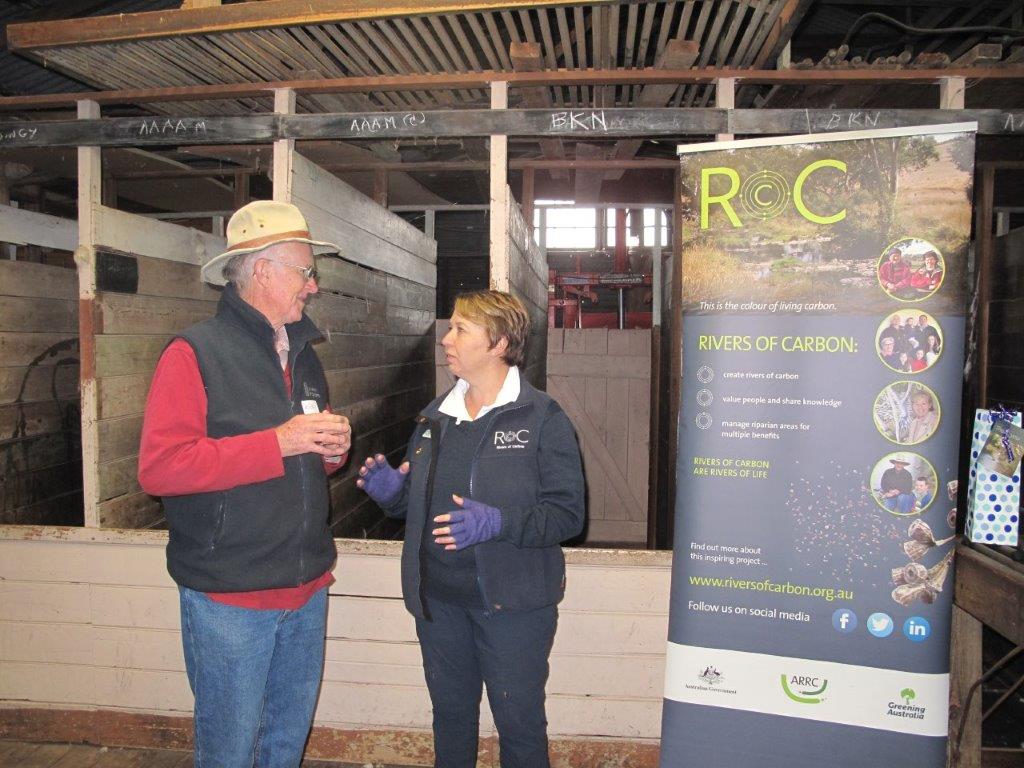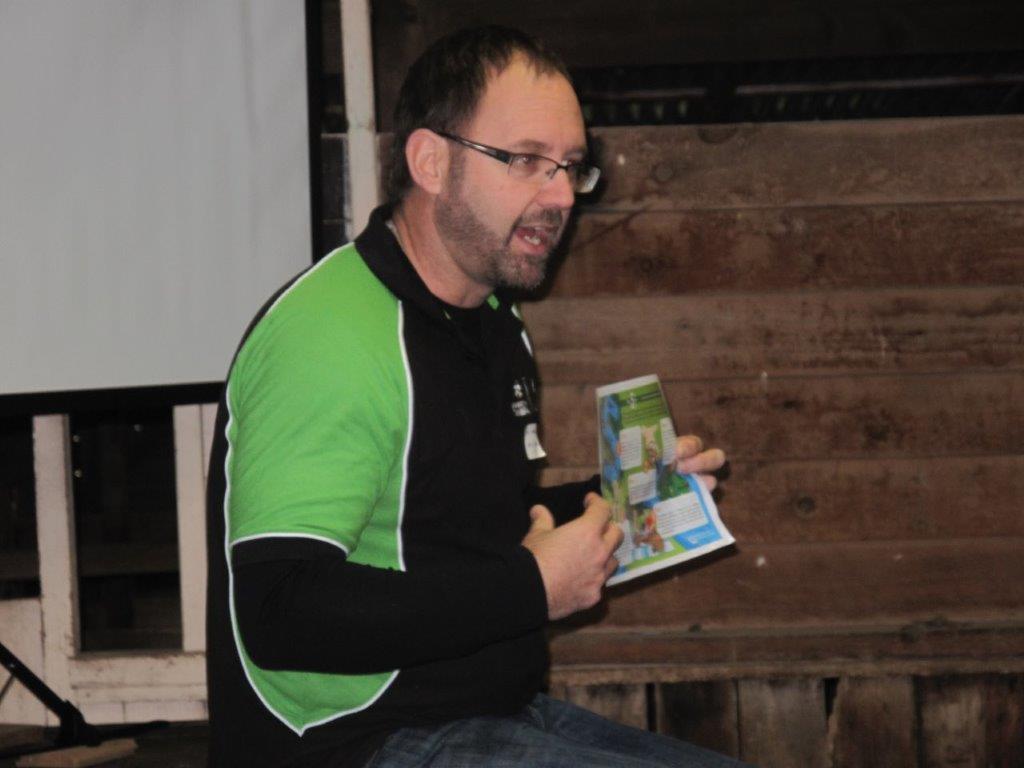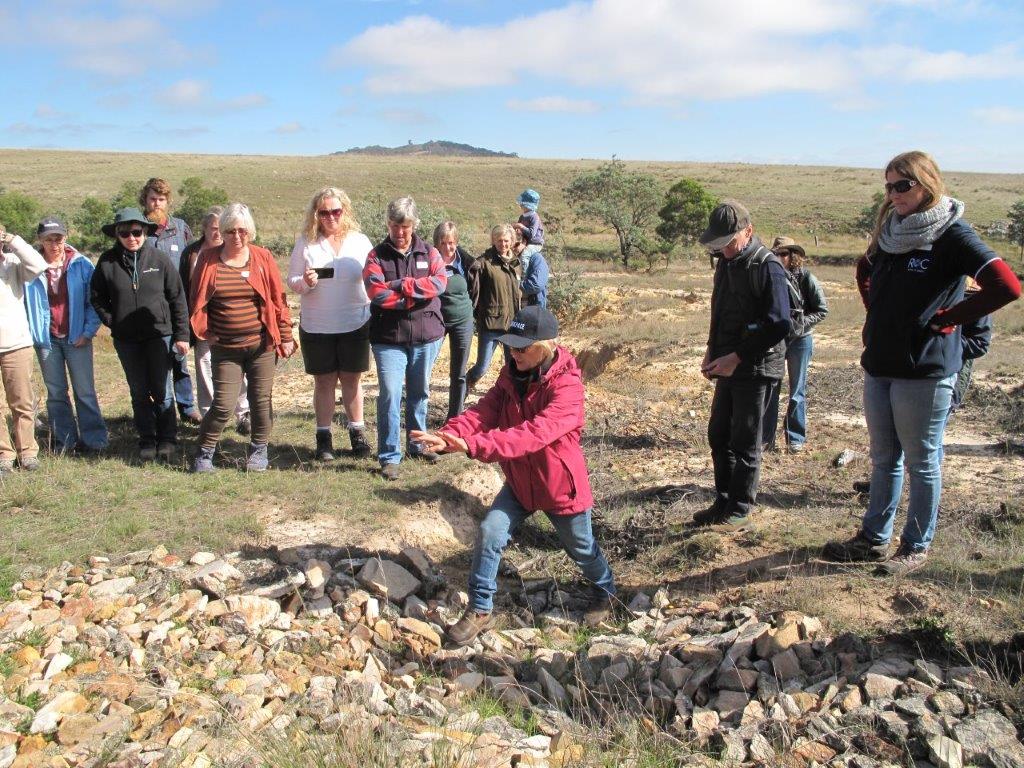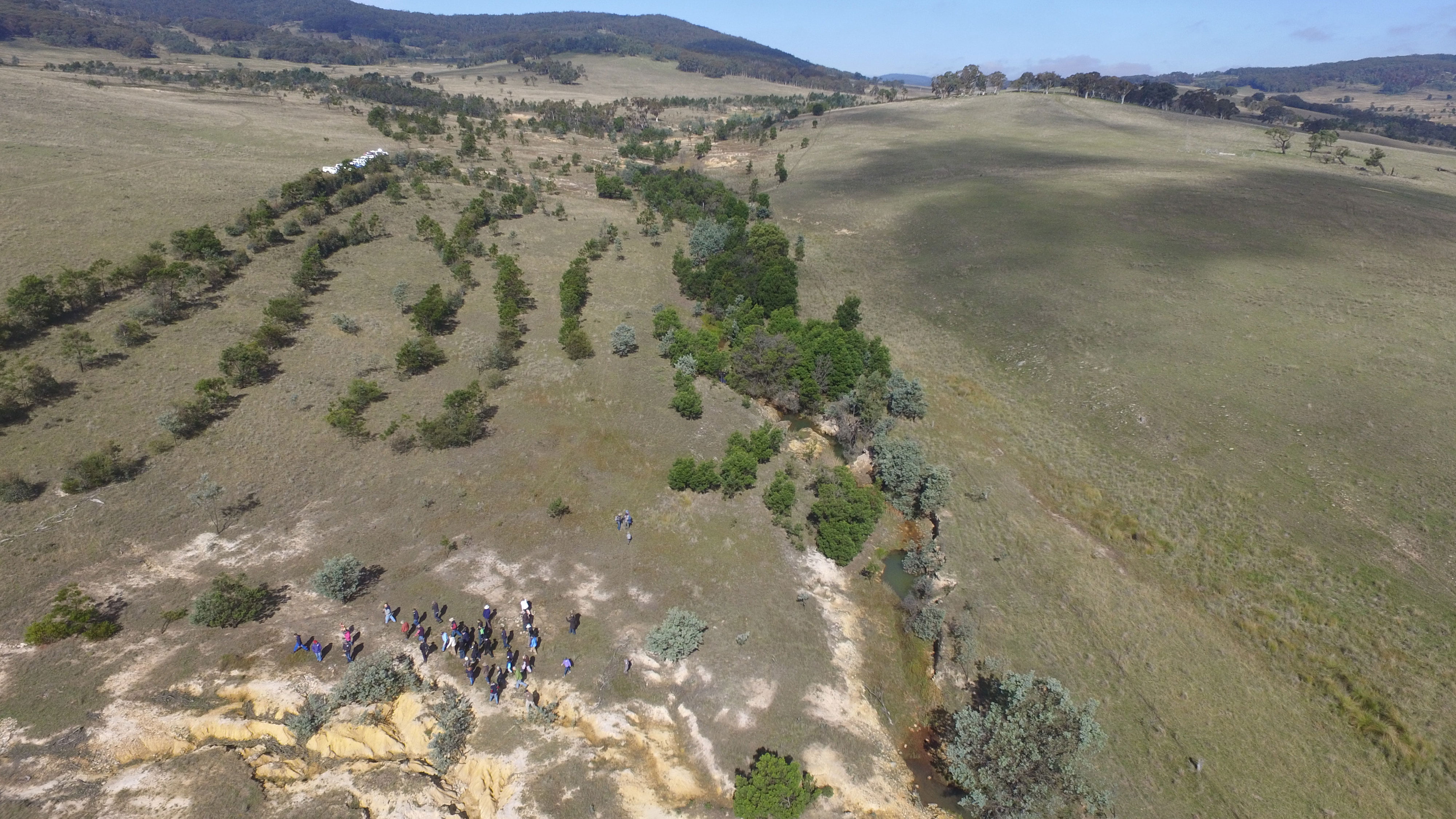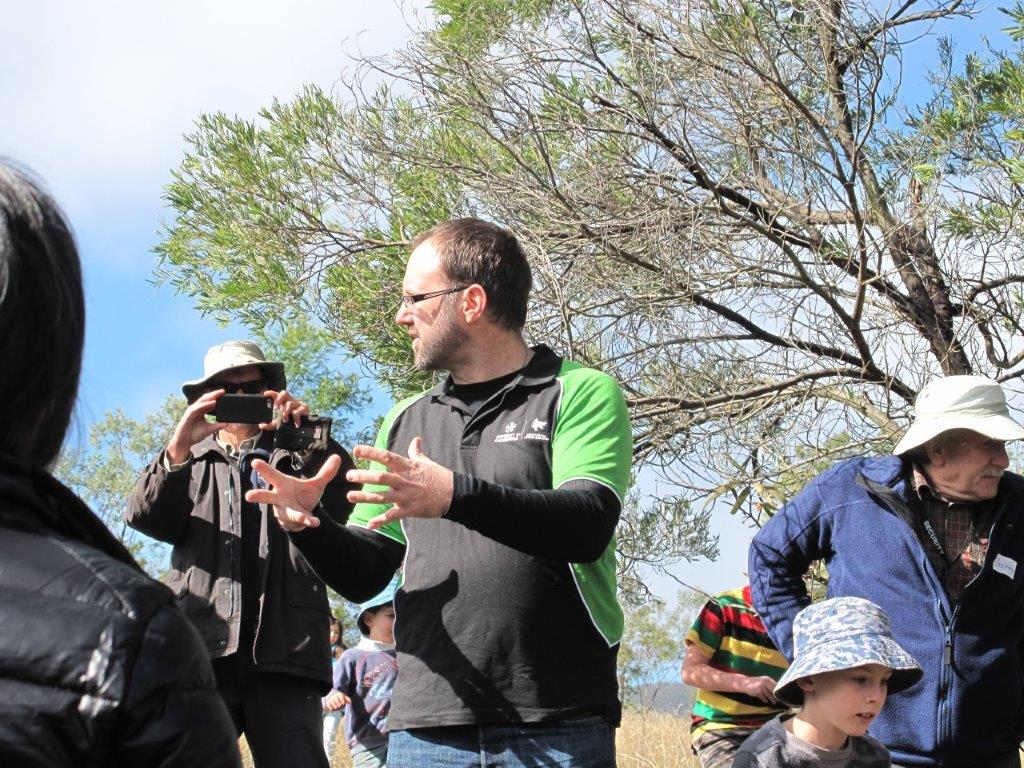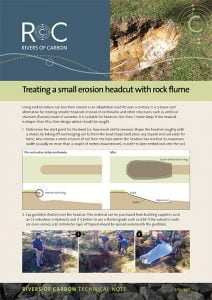On a grey and very foggy morning I was putting signs out on the road near Currowang (NSW) to our field day at Margie Fitzpatrick’s property ‘Australind’. My thoughts were ‘damp’ like the weather… Would anyone turn up? What if we had gone to all this effort and there were only a few people there?
I needn’t have worried, we had 70 people join us for what turned out to be a wonderful field day. Dan the Coffee Van Man warmed us up with cappuccino and cake, and armed with sustenance we went into the woolshed to hear Margie, myself and Ross Thompson speak about the value of riparian restoration for biodiversity, carbon and farm management.
Margie:
Margie is an inspirational speaker, and it is always good to hear how she has been able to do her restoration works within the context of a working farm. Some years you have capacity to do restoration works, other years you need to focus on your animals, fencing and turning a profit. We were fortunate that Rod Taylor from the science program Fuzzy Logic was attending the field day and he got this great interview with Margie that you might enjoy listening to.
Siwan:
I followed Margie with an update on how Rivers of Carbon is progressing. It has been six years since we started and we are delighted with what we have achieved. I talked about so far we have:
Revegetated 994 hectares, planted 126,060 tubestock, protected 110.5 hectares of remnant vegetation, enhanced 376 hectares of remnant vegetation, controlled weeds on 478 hectares of riparian land and fenced 145 kilometres of riverbank. These are fabulous results, but what we are most proud of are the 103 landholders we have worked with, the 1800 volunteers, the 45 community events and the number of people following our work through social media in Australia and overseas. People really matter to us and we are really trying to connect people not only to nature, but to each other. We know that social connection is the number one predictor of how a community will fare in the face of difficulties – being strongly linked, supported and part of something bigger than yourself, is vital to maintaining hope and creating a positive future. I also talked about how our Five P Framework is what guides us in our work, you can find out more about the Five Ps on this part of our website.
Ross:
Ross Thompson followed my talk, and I was super impressed as there was not a powerpoint side in sight! Perched on the edge of the wool sorting table, Ross talked about the changes our landscape has experienced over millions of years, and how the landscape we have today is what we need to work with, rather than trying to recreate an environment that is no longer present. Although we cannot go back to the ‘time before clearing’, we can create landscapes that provide for both human and ecological needs. Ross shared some of his research on carbon sequestration, and it was good to hear that as soon as we plant a tree or shrub in the ground we are capturing and storing carbon. Interestingly, Ross and his team have found that Although mature forests are great stores of carbon, in terms of the rate at which trees suck carbon out of the atmosphere, they are most effective in their earlier stages of growth. If you are interested there is more on this in this journal article by Cunningham etal 2015.
Paddock Walk:
After re-fueling with more cappuccino and cake we headed out on our paddock walk with Margie and Lori leading the way. The walk focused on practical ways to manage erosion, including headcuts and scalds. It was terrific to be walking through areas on Margie’s place where she had trialled a number of different approaches – rock, cut up sticks and branches, hay and manure, as well as harder engineering approaches in the more difficult spots. You can see from the aerial photos below the difficulties of the site, and the great gains Margie has made by planting vegetation (both direct seeded and tubestock).
We also provided workshop attendees with our new Headcut Guide that brings together work from Cam Wilson and our team on treating these problem areas on your place. You can download a copy of the headcut guide on the link at the bottom of the page.
Another interesting discussion we had was about the value of waterholes. It is often the case that a riparian area might be a series of small pools and only run occasionally when there is a big rain event. Ross talked about how research has shown the incredible importance of those small pools for maintaining populations of fish and bugs that move out into the riparian zone when the watercourse is running, thereby establishing new populations in other pools.
A great day:
Overall it was a great day. With the sun shining we had sausages cooked by my husband Tom and son Finn (thankyou!) and people lingered to chat and catch up on what they were doing on their places and how they could stay in touch. We hope you have enjoyed this write up, and if you also want to stay in touch with us please join our newsletter www.arrc.com.au/news and share this story out through your networks. 🙂
